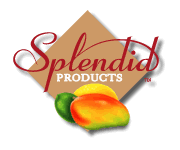|
Nutrition
In addition to providing grams and Daily Values, nutrient content
descriptors can inform consumers if a nutrient level is considered
high or low. When using a nutrient content descriptor, Food and
Drug Administration labeling laws state that the descriptor should
be used as in this example: broccoli, a low-sodium food, or broccoli,
low in sodium, etc. The statement low-sodium broccoli implies that
the broccoli is different or specially prepared. Do not use that
type of misleading statement. Nutrient content descriptors allowed
for oranges include: fat-free, saturated-fat-free, sodium-free,
cholesterol-free, high in fiber and high in fiber and high in vitamin
C.
Foodservice
Oranges are a natural for fruit salads and in drinks, but
they are used in everything from appetizers to desserts.
When brushed on meat, fish or poultry, it enhances the
flavor. Orange shells and baskets make attractive
garnishes and are good holders for dips and dressings.
It is easier to peel citrus if it is steamed for a short time.
Steaming loosens the membrane and facilitates peeling
without injury to the fruit. Place oranges in a pan, one
layer deep, and steam for two to four minutes. Cool for one
minute. Score peel of fruit into quarters. Do not pierce
fruit. Remove peel with fingers.
Recipes
Please click a dish name for a printer-friendly formatted recipe
in a new window.
Mexican
Lasagna
Chocolate
Orange Cookies
Citrus
Cabbage Salad
Citrus
Salsa Over Marinated Flank Steak
Chicken
Salad Wraps
|


![]()